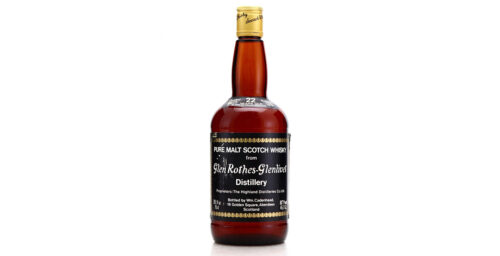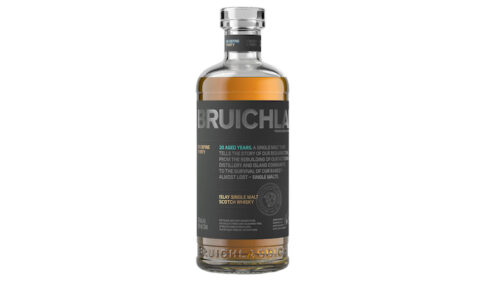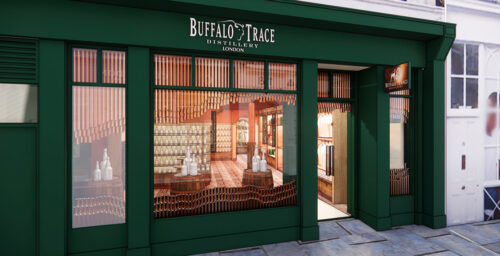On June 6, it was widely reported that Diageo, the world’s largest drinks company, is suing Deutsch Family Wine & Spirits over new packaging for Redemption whiskeys. In the court filing, Diageo claims the Redemption bottle was “revised to closely mimic” the appearance of Diageo’s Bulleit brand, infringing on its trademark.
Diageo’s complaint was filed in the U.S. District Court for the Southern District of New York. Claims made in filing a lawsuit give only one side of the case.

Today, Deutsch released the following statement from Tom Steffanci, President. “Diageo’s lawsuit, linking Bulleit with our award-winning Redemption Whiskey, is devoid of any merit whatsoever. Redemption is a high-quality product that is marketed as a distinctive brand. The packaging for Redemption was thoughtfully designed to reflect and highlight a lawful trademark and to differentiate this Whiskey.”
We will not only vigorously oppose Diageo’s lawsuit, but we will also continue to defend the integrity of the Redemption brand against any unfair linkage and/or association with Bulleit, or any other competitive product.”
Deutsch acquired Redemption when it bought Bardstown Barrel Selections. The Redemption line is whiskey distilled at MGP in Lawrenceburg, Indiana (which Deutsch freely discloses) and consists of a straight rye, a bourbon, and a ‘high rye’ bourbon.
Earlier this year, Deutsch released new packaging for the line, switching from a tall, cylindrical bottle to a soft-shouldered flask-type bottle. All three products use the same, new bottle. Diageo contends that the new package too closely resembles the bottle Diageo uses for its Bulleit line, which also includes a straight rye and a high-rye bourbon.
In its filing, Diageo specifically uses the term ‘knock off.’
Knockoffs have a long history in the beverage alcohol business. When the Jack Daniel’s brand took off after World War II, the whiskey shelf was suddenly full of black-and-white labels on square bottles, featuring a man’s name and words like ‘sour mash’ and ‘charcoal filtered.’ Two of them, Heaven Hill’s Evan Williams and Luxco’s Ezra Brooks, survived and are still with us.
Late last year, Diageo filed a similar suit against Sazerac, claiming that redesigned bottles for the Dr. McGillicuddy line of liqueurs too closely resembled the Bulleit packaging. That matter was settled out-of-court.
The Bulleit brand, as developed by Seagram’s and subsequently acquired by Diageo, was built around its proprietary bottle design, based on the look of 19th century apothecary bottles. From the beginning, Seagram’s had wanted to call the product ‘bullet,’ though probably with an alternate spelling, then it serendipitously discovered that such a brand already existed, as created by Tom Bulleit, an attorney in Frankfort, Kentucky.
Trademark laws are enforced by trademark owners, ultimately through civil lawsuits. It can be an expensive business for all parties. The trademark owner must value the mark highly to justify the cost of defending it. Diageo has demonstrated that it will defend Bulleit’s ‘trade dress’ vigorously.
None of this is new. Back in 2003, Brown-Forman sued Barton Brands, alleging that Barton’s new Ridgewood Reserve 1792 Bourbon infringed on Brown-Forman’s trademark for Woodford Reserve. Brown-Forman’s complaint cited similarities in bottle and typeface design, label placement, and the presence of ‘wood’ and ‘reserve’ in both names, among other alleged similarities.
Trademark cases often hinge on the likelihood of marketplace confusion. We protect trademarks so the public can rely on them to identify the source of a product or service. Brown-Forman said actual market confusion was taking place.
Claims and counterclaims flew in the war of words leading up to the trial. Brown-Forman produced an internal Barton memo that encouraged retailers to place Ridgewood next to Woodford on store shelves, to support its allegation that the infringement was deliberate. Barton complained that Woodford was just as misleading, since its whiskey was made at Brown-Forman’s Shively distillery and not at the restored distillery in Woodford County.
That case went to trial. In April of 2004, the court ordered Barton to remove Ridgewood Reserve 1792 from the market. In short order, it was replaced by Ridgemont Reserve 1792, which is still sold. (The brand is now owned by Sazerac.) The court told Barton it could not use the words ‘wood,’ ‘ford,’ ‘Labrot,’ or ‘Graham,’ nor any words that sounded like them. The phrase ‘distiller’s select’ was also out-of-bounds. Barton did not appeal.
Although Barton was ordered to recall existing bottles of the original product, most of them were snapped up by collectors first.
More recent is the 2010 case of Maker’s Mark v Diageo, in which Maker’s claimed that a Diageo tequila bottle with wax ‘tendrils’ infringed on its trademark. That case also went to trial. The District court ruled in favor of Maker’s Mark. Diageo appealed. Maker’s also won the appeal. The published appellate opinion cites writings by Gary Regan, Michael Veach, and myself about the history of American whiskey and its marketing. The legal point was that brand identity and product integrity are of unique importance to whiskey producers due to events in the industry’s history, and past Federal involvement in regulating the industry’s messaging, going back more than 100 years to the Pure Food and Drug Act and subsequent Taft Decision.
The current matter is in its early stages and trademark cases can be very hard to handicap. We will watch this one with interest.








